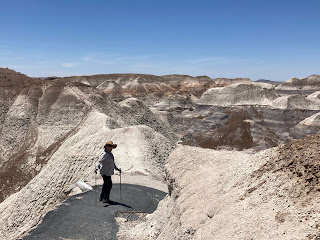Now why on Earth am I talking about such a thing?
It's the first DIY job on a motor I ever did, with the encouragement of Harry Delolian, our neighbor. He was the son of Armenians who had fled the genocide in the Ottoman Empire and he was one of the most resourceful human beings I've ever known. Harry kept both a giant Ham-Radio antenna and the fuselage of a single-engine airplane in his tiny yard, which earned him weirdo points with adults and cool points with 1970s kids.
Harry showed me how to fix our very expensive Toro mower, my dad's pride. I'd used it to cut a neighbor's grass, as I did for several folks in order to earn model-airplane money. Dad was livid when I "broke" the mower, because dad, for all his great qualities, was no DIYer. To him a tool box consisted of a pair of slip-jaw pliers, a claw hammer, and one 16D nail about 4" long. Plus lots of cussing and sweating. If those items would not fix something, it was time to "call some guy."
Dad was ready to load the Toro into the Pontiac's trunk but Harry waved that off. "Joey," he said to me, "go to Lorraine Hardware and buy a crankshaft key for a Toro." As I walked down the street I kept saying "crankshaft key," so I would not look the fool in front of the serious and slightly judgemental men at that emporium of all things holy and perfect. I preferred (and still do) a hardware store to a church, since I think God meant for us to fix things, as part of some inscrutable and larger plan, not sit around with people we don't know well while singing poorly.
In any case and for under a dollar, I soon had the part. Harry pulled the top cover off our mower, thus ushering me into a realm of metallic mysteries. He talked me through every bit of the work, something he'd probably yell at kids in boot camp (he was an Army DI who had served in The Battle of the Bulge and as a Recon Scout in Korea). The tiny part dropped right into place, and as soon as the Toro was screwed back together, it started and ran as well as new.
I thought of Harry the other day when I broke the crankshaft/flywheel key on our 13-year-old Craftsman self-propelled. When the mower would not start, I knew right away what I had done and said "thanks, Harry!" Two YouTube videos later, I knew how to find my mower's engine number
and how to change the key. But it was Harry's hand that guided me. Amazon, not Lorraine (long and sadly closed) supplied the Briggs and Stratton key (I ordered 2, because things happen). Price now? $2.49 each. But imagine the cost of taking a mower to the shop.
The old Craftsman fired up on the first pull. That it still runs after 13 seasons is also testimony to Harry's annual reminders to change oil, swap spark plugs, clean air filter, sharpen blades, and keep the deck clean above and below.
Now don't you want to go fix something? Don't be like another neighbor who filled the gas tank with the motor oil supplied with the new mower (of course not reading the owner's manual). That new mower never, ever ran right.
So fix something instead of breaking it!
It's God's tractorpunk plan for you. See you in the yard on Sunday.






